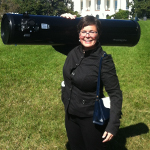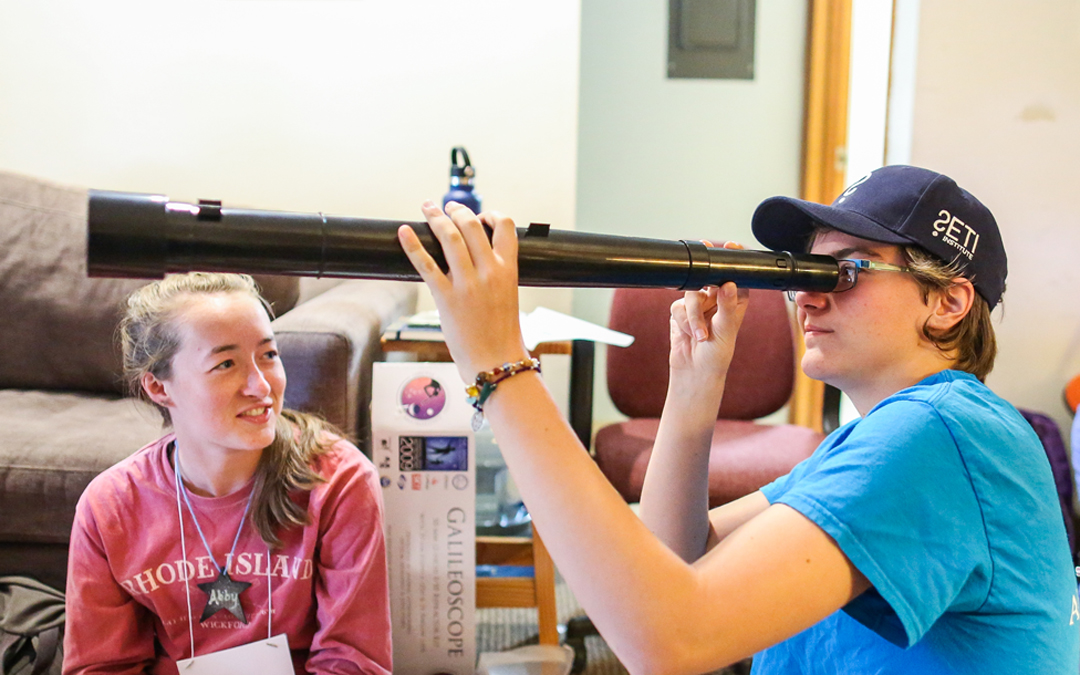NASA has made some of the most amazing advances in technology and is lauded as one of the most innovative organizations of our time. You might think that means that they don’t make many mistakes—when you’re shooting people into orbit on top of huge rockets, former NASA Flight Director Gene Krantz said it best: “Failure is not an option.” But here’s the funny thing: sometimes failure is a fantastic option. Without many, many, MANY failures, NASA would not have been able to advance space science so spectacularly. Mistakes are inevitable. No matter how much of an expert we become, we always have something more to learn. Making mistakes is an amazing opportunity to step up as a leader, understand your weaknesses, and learn from them. Helping your girls build a growth mindset will not only transform their mistakes and failures into opportunities, but it will also build resilience and determination for future success!
Growth, not Failure
We are often asked to get the “right” answer on a test, and sometimes you can succeed just by giving it your all! But in many situations, the key is baby steps. When babies learn to walk, do they start by running? No! We often start by crawling, then a first few stumbles, and by practicing every day, we get more stable. It takes failing over and over again to learn how to walk. No one expects a baby to walk on her first try!
Succeeding every time we try something new, or even something we already know how to do is impossible! The goal is to keep trying. If we only pick projects in which we succeed, we will never grow. By changing the story you tell yourself about failure and reframing each mistake as teaching you something important, you develop a way of thinking called growth mindset. Psychologist Carol Dweck studied the way our brains learn and found that people who believed they could learn new things if they worked hard at them (growth mindset) were much better at tackling new problems than people who believed that their abilities were already within them (fixed mindset).
“By changing the story you tell yourself about failure and reframing each mistake as teaching you something important, you develop a way of thinking called growth mindset.”
When you or your Girl Scout are trying something new, it can take time to figure out what methods work. What if NASA gave up on going to the Moon after their first failed rocket test? We never would have gotten there. Everything we do, we had to learn at some point. Think of something you did today and all the steps it took to learn that skill, whether it was reading or eating or even just sitting up are all examples of learned skills that might seem easy today!
How to Fail Gracefully
There are a few important but easy steps to building a growth mindset: recognizing failure, finding out what went wrong, and trying something new. If you re-frame the outcome, then you are not a failure, you are simply learning. Instead of being stuck in your mistakes, you can be proud of your determination to keep trying. Building courage, confidence, and character doesn’t happen to girls who avoid making mistakes. It happens when we learn from our many mistakes. Healthy risk-taking is a vital part of growing into a confident and successful person, and it’s a core value of Girl Scouts.
“A master has failed more times than the beginner has even tried.”
Stephen McCreenie, author of the graphic novel Space Boy
Never let a fear of failure stop you from trying something new. No one can learn to swim if they never put a foot in the water. If your girl has a fear of drowning, she can start by trying and failing in smaller, safer ways while she’s still in the shallow end, building her confidence and improving over time. While she can still touch the bottom, she can get water up her nose, splash around like a wild fish, or try opening her eyes underwater! Even if you learn things slowly, you’ll build your confidence and learn some new things. Trying new things, and yes, even failing entirely at them at first is such an important reminder of both the frustration and the joy of learning.
Modeling Healthy Failure for your Girls
As a leader, be sure to model learning new things and failing with your girls. Feel like you’re a terrible artist? Go ahead and make that painting anyway! Don’t know how to throw a frisbee? Throw one anyway and laugh with your troop as it wizzes off in an unexpected direction. Enjoy not having to be good at something, and show your girls how to try something new with confidence, and fail gracefully. Point out what you learned from an experience, and that it’s ok that you’re not great at it yet. And when you hear a girl (or yourself) saying, “I’m not good at…” a helpful little word to add to the end of that sentence is “yet.” So you may not be a great artist yet, but you learned how to blend beautiful clouds today and that will help you make a better painting next time. Praise girls for their efforts, not the outcomes, even when they don’t get it right, and use language like, “I like how you kept trying” instead of, “you’re great at that.”
So how does that apply to NASA? Do you think that they just put tons of rocket fuel under a pointy ship with people inside and think they would get to the Moon? Not a chance! That would be a terrible failure because it would most definitely risk lives, right? So the time to fail is early and often before you put anyone in that rocket ship! It takes hundreds if not thousands of tests on each piece of equipment and most of those tests fail in order to make the final piece more robust in many ways. Just as NASA not only did fail, but needed to fail again and again to get to the Moon, you and your girls will fail many times at many things throughout life. But failure should never be the end, only the beginning of a great and exciting learning process. Practice failing gracefully with your girls, and watch as they learn to dust themselves off and try again with courage, confidence, and character.
What to do next:
- Create a SMART (or SMARTER) goal for you and your Girl Scouts to work towards together.
- Check out other Trailhead articles on how to model go-getter leadership for your Girl Scout troop.

Vivian White—Vivian is the Director of Free-Choice Learning at the Astronomical Society of the Pacific in San Francisco. By day, Vivian works with amateur astronomers and museums, creating and sharing astronomy activities with those who love them. After work, she zooms across the Bay to an adventurous seven-year-old explorer and they wander far and wide, looking for adventures and trouble. (They are frequently successful.) Vivian can often be found stargazing, swimming, or throwing pots on her kick wheel.



Stories like this are exactly why I subscribe to the Trailhead even though I’m a troop leader in Georgia! Thank you so much!
Thanks, Carmen, for your support! If there are any types stories that you’d like to see more of the Trailhead, feel free to let us know 🙂